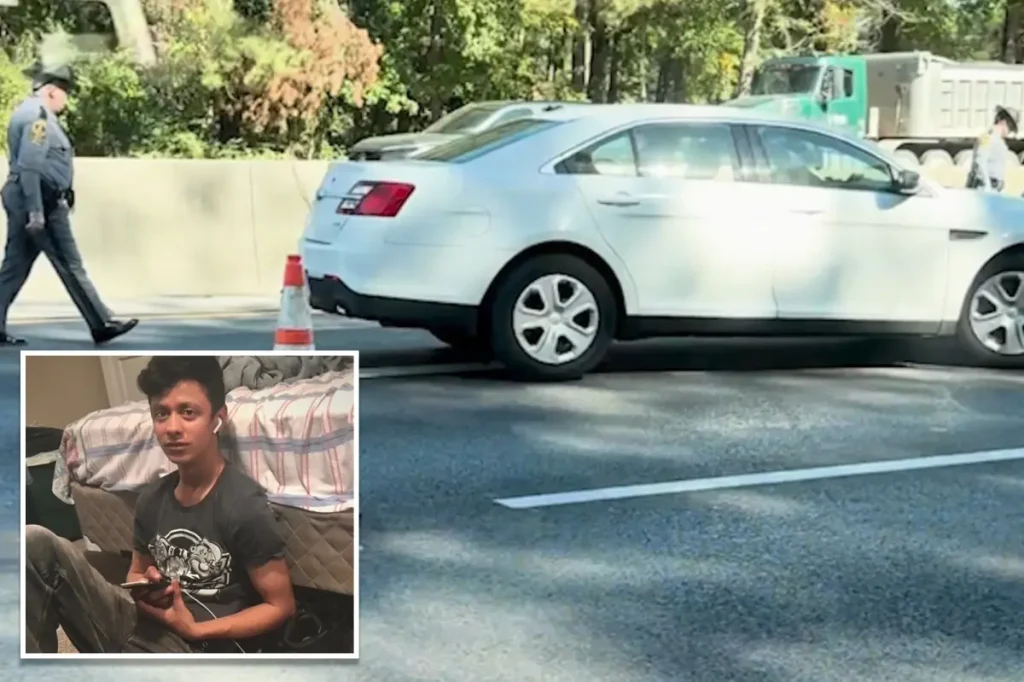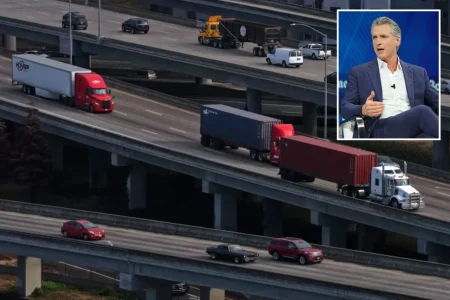Tragic Death Highlights the Human Cost of Immigration Enforcement
In a heart-wrenching incident that underscores the complex and often devastating realities of immigration enforcement in America, 24-year-old Josué Castro Rivera lost his life while attempting to flee from Immigration and Customs Enforcement (ICE) officers in Virginia. The young Honduran national, who had been living in the United States for four years, was on his way to his gardening job last Thursday when ICE officers conducted what they described as a “targeted, intelligence-based” operation. When officers pulled over the vehicle carrying Castro Rivera and three others allegedly living in the country without legal documentation, Castro Rivera panicked and fled on foot. In a desperate attempt to escape, he tried to cross Interstate 264 in Norfolk where he was struck by a 2002 Ford pickup truck. Emergency responders pronounced him dead at the scene around 11 a.m., according to Virginia State Police reports.
Behind the headlines and policy debates lies the story of a young man who, according to his brother Henry Castro, “had a very good heart.” Castro Rivera had been working diligently in America, sending money back to Honduras to support his family. This practice of remittance—immigrants working abroad to financially support relatives in their home countries—represents a critical economic lifeline for many families in Central America. Now, instead of planning for a future brightened by these remittances, Castro Rivera’s devastated family is raising funds to return his body to Honduras for a funeral. “He didn’t deserve everything that happened to him,” his heartbroken brother told reporters, describing his death as an “injustice” that has left a family grieving across borders, their lives forever altered by a moment of fear and the unforgiving physics of highway traffic.
The Department of Homeland Security (DHS) has taken a firm stance on the incident, attributing Castro Rivera’s death to his decision to flee after “resisting heavily” during the attempted detention. In a controversial statement that has intensified the already heated debate surrounding immigration enforcement practices, DHS claimed the gardener’s death was “a direct result of every politician, activist, and reporter who continues to spread propaganda and misinformation about ICE’s mission and ways to avoid detention.” This statement places the responsibility not just on Castro Rivera’s actions but on broader societal forces that, in the agency’s view, create an environment of mistrust and fear around immigration enforcement. The statement has drawn criticism from immigrant rights advocates who argue it deflects responsibility from examining the tactics and approaches used during immigration operations.
This tragedy in Virginia is not an isolated incident but part of a troubling pattern of deaths occurring during immigration enforcement actions across the United States. Just last month in a Chicago suburb, federal immigration agents fatally shot a Mexican man during a traffic stop, an incident that raised questions about proportionality and use of force. The DHS initially reported that a federal officer was “seriously injured” during that encounter, but subsequent release of police body camera footage showed the officer walking around and describing his own injuries as “nothing major,” raising concerns about transparency and accuracy in official accounts. These discrepancies have fueled public skepticism about immigration enforcement narratives and heightened calls for greater accountability and independent oversight of operations.
The human toll continued mounting through the summer, with a farmworker dying in July after falling from a 30-foot-high roof during a chaotic immigration raid at a southern California marijuana farm. The following month, another man met a fate similar to Castro Rivera’s when he ran from federal agents onto a California freeway and was fatally struck by a vehicle. These successive tragedies paint a disturbing picture of panic, fear, and deadly consequences surrounding immigration enforcement operations. They raise profound questions about the methods employed, the psychological impact of these operations on targeted individuals, and whether alternative approaches might prevent such loss of life while still upholding immigration laws.
At its core, the death of Josué Castro Rivera represents the human dimension of immigration policy—a dimension often obscured by statistics, political rhetoric, and ideological battles. While debates about border security, deportation priorities, and legal pathways for immigration will continue in legislative chambers and across media platforms, cases like Castro Rivera’s remind us of the real people whose lives hang in the balance of these discussions. His story—a young man working as a gardener, supporting family back home, whose life ended in terror on an interstate highway—cuts through abstractions to reveal the stark human consequences of our immigration enforcement system. As his family mourns and prepares to receive his body in Honduras, the nation faces difficult questions about whether the current approach to immigration enforcement, with its attendant risks and human costs, truly reflects American values and priorities. Meanwhile, in Honduras, a family will bury a son and brother who left seeking opportunity and security, only to meet tragedy on an American highway.










